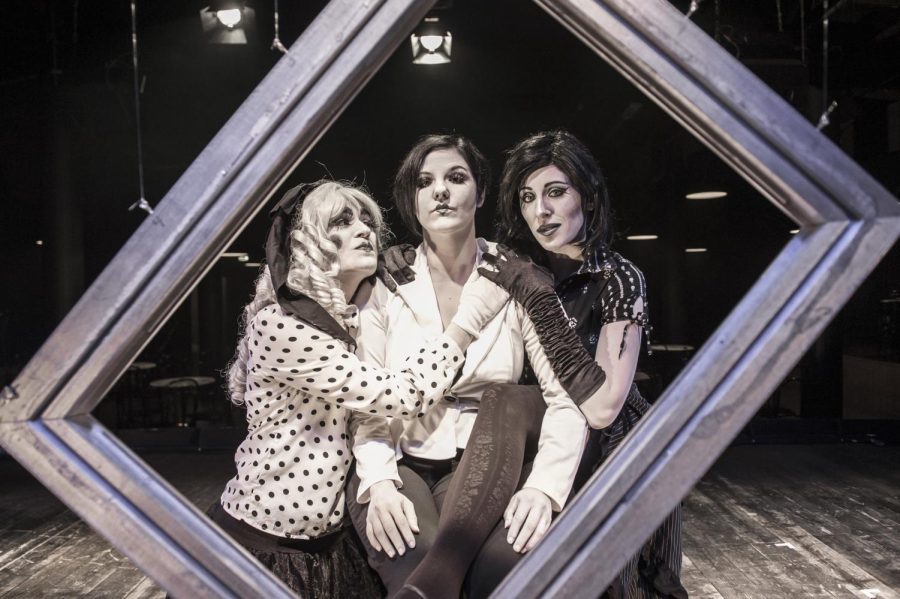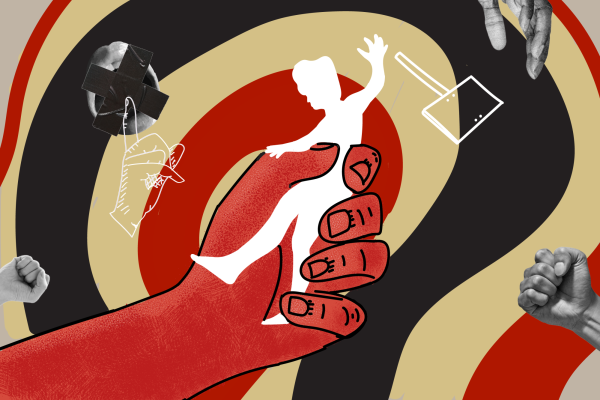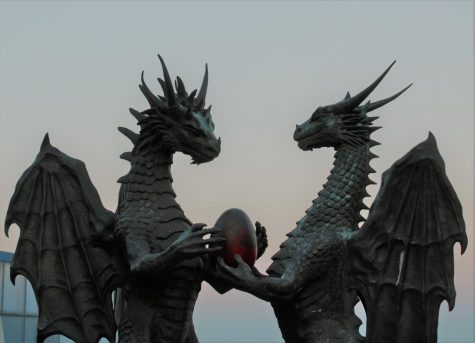Internationally touring troupe explore serious topics through clowning
Francesca Chilcote (left), Dory Ford-Sibley (middle), Echo Sunyata Sibley (right)/ (courtesy of Women From Mars)
Trigger warning. On Aug. 26 at 7:30 p.m. “Women from Mars” showcased in the Branding Iron Theatre for a one-night performance. The play focused on issues such as body dysmorphia, sexual assault and the struggle of being a woman in a society that wants to control your body and control the narrative about what kind of woman you should be.
The beginning of the play showcased three women clowns women in shadow, with their backs turned to the audience. Once the lights came on, the women began to stare into mirrors. They were admiring their appearance and participating in admiring themselves. However,there is more than meets the eye. The women began to worry about how they looked by highlighting their body parts, wondering whether their breasts were too big or small.
Two of the women began to fight over the difference in their body frames. Comparing and contrasting the type of women they were according to their body types. Throughout the scene, there was music playing to add a comedic element to the women comparing themselves to each other to find out who was better or worse.
Once the two arguing women left the stage, the last clown was left to have fun and play by herself. Although, she had her own troubles too. The last clown put on a television show to watch and danced as the screen sang about beautiful women. She hung onto her slim frame, wondering whether she was beautiful too.
What made a lot of the scenes more impactful was the miming. Through body language, we could tell when the clowns were fighting or when a clown was going through a crisis due to body dysmorphia. The last clown ended up stuffing tissues up her shirt to appear more ‘womanly.’
There was also a scene of sexual assault, in which one of the clowns put on a hat pretending to be a man while sexually harrassing one of the other clowns. Everything started off friendly, but ended sinisterly as the sexual assault led to an abortion, shown through red strobe lights with music playing in the background to highlight the scene.
The only thing lacking within the play was that one of the clown’s seemed to have less of a story. Two of the clowns dealt with both sexuality and body dysmorphia, but one of the clowns seemed to be there as part of the action or to fit a role in order to move the plot forward. All in all, it was still a story about three women and the pain caused by the societal expectation that they could not be less than perfect.
The last scene of the play involved the three women on camera, playing with makeup and figuring out what suited them best, but it was not a happy scene as it ended with all three women pulling sad faces. The finale included the three women without makeup, bowing to the audience showcasing that women are in their best form when they are true to themselves.












